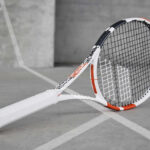Dirt and moisture are every car and RV owner’s worst enemy. They may have no effect whatsoever on the outside of your vehicle, but once they’ve found a way inside, their presence is anything but welcomed. Removing, and neglecting to properly reseal the water vapour barrier from inside a car door could leave you with a thoroughly soaked carpet after the next big rain or carwash. And hopefully, you’ll notice it before the mould, mildew, and electrical headaches have a chance to settle in.
Not adequately sealing an opened headlight, or around a previously uninstalled taillight is going to have the same effect. You’ll be surprised just how much water can come through even a pinprick-sized hole; and when it mixes with dust and dirt to clog drainage vents and cake-over components that need airflow, you’re facing a whole new set of problems. The bottom line is – you need dirt and moisture to stay where they belong: outside the vehicle. That means you also need the right kind of sealant to keep them there.
The Best Sealing Solution
From liquid gasket type sealants, to the paint sealants used to protect finishes from UV exposure, there’s no shortage of sealants in use on modern vehicles. When it comes to the broadest range of usage, however, butyl-based sealant tape is in a category all its own. This flexible, waterproof tape has the distinction of being both a sealant and an adhesive; and when it’s used with compatible products like sound deadeners and loom tapes, it adds up to be just the right combination for keeping your interior, and a host of components throughout your vehicle dry and dirt free.
What makes butyl tape stand out in a sea of hybrid sealant adhesives is that it’s made from pressure-sensitive, synthetic rubber. It doesn’t cure like conventional sealant; and its malleability means it’s infinitely workable, along with the added benefits of being:
- An excellent bonding agent where persistent moisture is present;
- Equally compatible with plastic, metal, and glass surfaces; and,
- Not prone to adhesion loss due to movement, flex, or vibration.
In short, there’s no substitute for a self-fusing butyl sealant like Seal It brand tape for creating watertight and airtight seals. It’s the sealing solution that ordinary caulks, silicones, and epoxies can’t begin to compare with.
A Full Range of Repairs
Butyls’ reputation for primarily being a headlight sealant tape is well deserved. A thin butyl bead can almost instantly reseal a converted headlight or taillight; but it’s also great for a whole range of automotive repair and restoration jobs, including
- Replacing and resealing door vapour membranes;
- Seating rattling and loose-fitting interior trim and accessories; and,
- Filling gaps between panels where dirt and moisture easily penetrate.
In spite of these superior sealing and adhering attributes though, the most amazing quality about automotive sealant tape shouldn’t be overlooked: its durability. With higher UV resistance than other types of sealants and a temperature tolerance between -50°C and 130°C, butyl tape’s durability makes it perfect for applications where exposure to intense direct sunlight, road debris, and even salt water are inevitable, such as:
- Resealing sunroofs, roof vents, and windows in RVs;
- Sealing the undersides of fasteners used to secure ute canopies; and,
- Bedding the bolts and deck hardware on boats.
And even beyond all of its routine uses, butyl tape’s non-sag consistency also makes it an invaluable commodity as part of any roadside emergency kit. Hopefully, you’ll never need it in such a capacity, but in case you do, you can depend on it for rapid repairs like:
- Sealing the seam on a leaking petrol tank;
- Temporarily resealing a leaking windshield or sunroof; or,
- Applying a waterproof cover to a wiggling, or exposed electrical connection.
Because you never know when you may need to make a quick seal, it only makes sense to keep a spare roll of butyl sealant in your car, RV, or boat at all times.
Uses at Home
In anticipation of resealing a pair of converted headlights, you might already have a roll of butyl sealant tucked away in your garage, but don’t forget: leaks can occur at home too. It’s because of butyl tape’s compatibility with so many different types of surfaces, that it also makes an excellent around-the-house sealant for:
- Waterproofing access points where HVAC ducts enter your home;
- Sealing the edges of roofing tiles and vent tubes; and,
- Closing areas around pipes or plumbing fixtures where water and moisture can seep through.
Suffice it to say, having only one roll of butyl sealant around may not be enough.
Applying the Tape
Butyl tape’s just as easy to apply as it is effective at what it does. However, just like any other sealant or adhesive, surface preparation is the key to the final outcome. For other than emergency circumstances, both mating surfaces need to be clean and dry, and a quick rub-down with a quality degreaser is going to ensure they’re free from any earlier sealant residue or contamination. And once they’re cleaned, a start-to-finish application only requires:
- Placing the tape on the cleaned surface,
- Applying pressure to its paper backing to ensure it’s solidly
- Removing the backing,
- Lining up and affixing the mating surface, and,
- Apply pressure to ensure the bond is secured.
It’s as easy as that, and the result is going to be a watertight and airtight bond that you can expect to last for years.
The Final Word
At the end of the day, dirt and moisture are more than just automotive inconveniences. Once they’ve found a way into where they shouldn’t be, they can take all the enjoyment there is out of driving your car or RV. Fortunately, all it takes is a roll of butyl-based sealant tape to eliminate the headaches that can arise from having a few unsealed surfaces. Regardless of whether you’re doing a restoration, a retrofit or just a repair, it only takes a few minutes to make a permanent, professional quality seal, at a price that’s guaranteed to leave you smiling long afterwards. And once you’re finished, it’ll make all your concerns about dirt and moisture a thing of the past.


